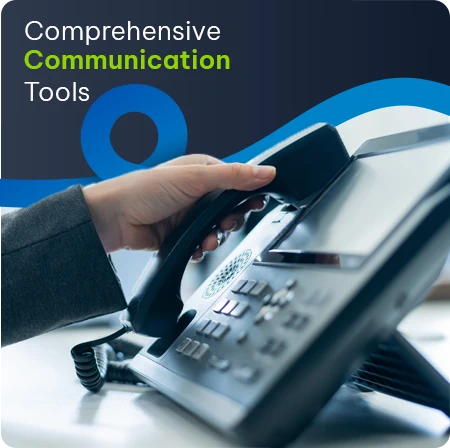From smoke signals and homing pigeons, long-distance communications have come a long way – today telecom platforms and solutions have transformed how organisations and individuals share voice, data, video and information. The world has moved beyond the physical and into the digital with solutions that allow for clear, always-on, and accessible communications.
But what lies ahead for the telecoms landscape in 2024? Will the smoke signals return or are there fresh leaps in digital innovation set to reimagine the stage?
Continuous Communication Evolution
The move through the cellular technology ranks has been rapid over the past few years with 5G now one of the most exciting steps forward in a new telecoms direction. Using higher frequency waves than earlier mobile networks, 5G allows for an increasingly large number of devices to have access to the internet at higher speeds. These networks also deliver additional benefits across increased bandwidth, low latency, increased density – up to 100 times more connected devices in the same physical area within which 4G or LTE operate – and reduced power consumption.
Looking ahead, 5G is set to revolutionise communication and connectivity, bringing improved speeds, accessibility and mobility. Several of South Africa’s networks have let slip that 5G is on their radar for 2024 which could potentially mean rapid transformation across the country.
Local Telecoms Landscape Under the Microscope
South Africa’s five largest mobile network operators (MNOs) have clarified that their agendas for 2024 include new products, 5G expansions, rural rollouts, and enhanced anti-load-shedding measures.
In addition, the Independent Communications Authority of South Africa (ICASA) plans to hold another auction for high-demand spectrum – the licensed and regulated electromagnetic radio waves used by MNOs as the communication medium for their voice, SMS and data services – in early 2024. This is a positive step forward for the sector considering how long it took for the authority to hold the first spectrum auction in 2022.
Mobile broadband is a critical part of any country’s economic infrastructure, and its successful implementation is necessary for economic growth, job creation, investment, inclusiveness and empowerment. The country needs telecoms companies committed to playing an active role in the economic upliftment of South Africa through investment into infrastructure that allows for both organisations and individuals to grow.
Forging Ahead: Fixed Wireless
Fixed wireless options provide lower speeds than fibre, but at a lower price point. Companies and consumers can benefit from fixed wireless solutions designed to meet their budget constraints, which is particularly relevant in light of the current local and global economic climates. From uncapped wireless through to dedicated 5G offerings, companies are evolving their solutions to ensure that their customers can afford trusted and reliable telecoms services.
Some of the key solutions worth looking at, particularly for companies and consumers keen to get out from under rigorous or restrictive connectivity constraints, are satellite, fibre to the home (FTTB), mobile and fixed wireless. Thanks to the sheer variety on offer, it is possible to find the perfect balance between availability, speed, price and requirements.
Rollouts to Previously Under-Serviced Areas
Many mobile network operators (MNOs) have announced plans to roll out optical fibre cables to rural areas. This meets a growing need to service South Africans from across all socio-economic backgrounds as they consume more content and services online. This will revolutionise connectivity accessibility in areas where there is no fixed-line connectivity as users are entirely reliant on mobile which comes with high data costs and no uncapped data options.
Customers in areas such as Mitchell’s Plain, Grassy Park, Chatsworth, Phoenix, Gonubie, Soweto, Soshanguve and Vosloorus are all likely to see radical connectivity change over the next year.
As an integrated ICT and infrastructure provider, Vox is making plans to spur fibre uptake in several previously disadvantaged communities around South Africa through our subsidiary company HYPA, an Internet Service Provider (ISP) which focuses on providing cost-effective unlimited wireless connectivity, enabled by fibre, to areas covered by the Frogfoot RISE, Vuma Reach and Metro Fibre networks.
Through HYPA, residents of these areas will be able to get affordable, prepaid wireless internet access at their homes that provide them with unlimited data. The barriers to entry have been further reduced as there are no installation or connection fees, or long-term contracts that users need to sign up for.
Frogfoot Networks is also rolling out optic fibre networks in new areas which have been previously under-serviced. Fibre has the potential to add value to the local economy and help uplift communities because it brings broadband connectivity to all.
Dealing With Load-Shedding
To enhance network resilience, mobile network operators have invested significantly into battery, generator and alternate backup power solutions at base station sites across the country, including critical towers, data centres and customer service centres.
For consumers, it is also important to ensure that connectivity back-up extends to the home. So, investing into an affordable and reliable backup power supply has become a much-needed investment. Consumers should consider using a customised solution from an MNO as these are designed to handle the demands of a home wi-fi setup. You want to know that your power solution allows you to continue streaming, browse social media or search online for a few hours of uptime.
Where Is a Crystal Ball When You Need One?
Only time will tell whether the economic outlook for South Africa will improve in 2024. Certainly, it has been challenging. Economists believe that inflation rates are easing and borrowing costs could become lower later in the year – which is good news for those paying off home loans, cars and other debt. And of course, 2024 is an election year, which does potentially mean that certain reforms and infrastructure maintenance might become more visible in a bid to attract voters.
Whether or not politics and politicians deliver on their promises this year, it is clear that MNOs will – the competition is fierce and innovation is reimagining how the sector approaches connectivity and customers.












